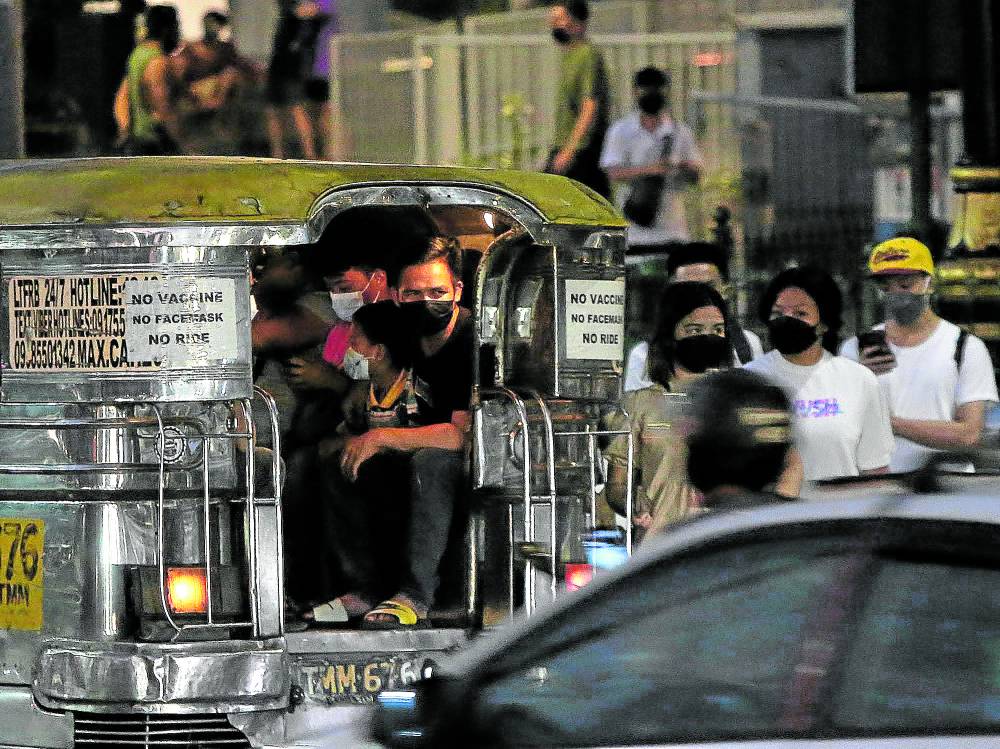
(FILE Photo) Unvaccinated individuals may ride public transport without fear of being shooed away or offloaded as the “no vaccine, no ride” policy is lifted from Feb. 1 to 15 when Metro Manila comes under alert level 2. —RICHARD A. REYES
MANILA, Philippines — Metro Manila and Quezon province are now classified as low risk for COVID-19 based on metrics from the independent analytics group OCTA Research.
“NCR (National Capital Region) and Quezon are now at low risk while Batangas, Cavite, Laguna, and Rizal remained at moderate risk mainly to high positivity rates,” OCTA Research fellow Guido David said in a tweet on Thursday.
Based on data presented by David, the one-week growth rate of COVID-19 cases was at -63 percent in Metro Manila and -69 percent in Quezon province.
NCR and Quezon are now at low risk as of February 9 (based on Covidactnow metrics) while Batangas, Cavite, Laguna and Rizal remained at moderate risk. The public is advised to continue observing health protocols @dzbb @DZAR1026 @allangatus @dzrhnews @onenewsph @ali_sotto @dwiz882 pic.twitter.com/IJp0ClwSbk
— Dr. Guido David (@iamguidodavid) February 10, 2022
The positivity rate is still considered high risk in Batangas at 14 percent, Cavite at 17 percent, and Laguna at 13 percent. The positivity rate is the percentage of people found positive for COVID-19 among all those tested in a certain period.
Indicators used by OCTA Research are based on US nonprofit COVID Act Now which are different from metrics being used by the Department of Health (DOH) in identifying risk classifications.
Based on the last update of the DOH on Tuesday, both Metro Manila and Calabarzon (Cavite, Laguna, Batangas, Rizal, and Quezon) are still at moderate risk status for COVID-19.
The country currently has 96,326 active COVID-19 cases, including 3,651 new coronavirus infections recorded on Wednesday.